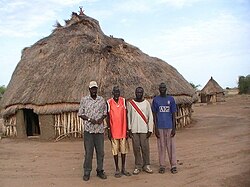History
On 14 January, 2017, President Kiir issued a presidential decree that increased the number of federal states from 28 to 32. Thus having Latjor State splitting and forming Maiwut State with Maiwut as its capital, and Koma, Longuchuk, and Maiwut as its 3 new counties. [2]
Bol Ruach Rom was the Governor of Maiwut State.
This page is based on this
Wikipedia article Text is available under the
CC BY-SA 4.0 license; additional terms may apply.
Images, videos and audio are available under their respective licenses.
